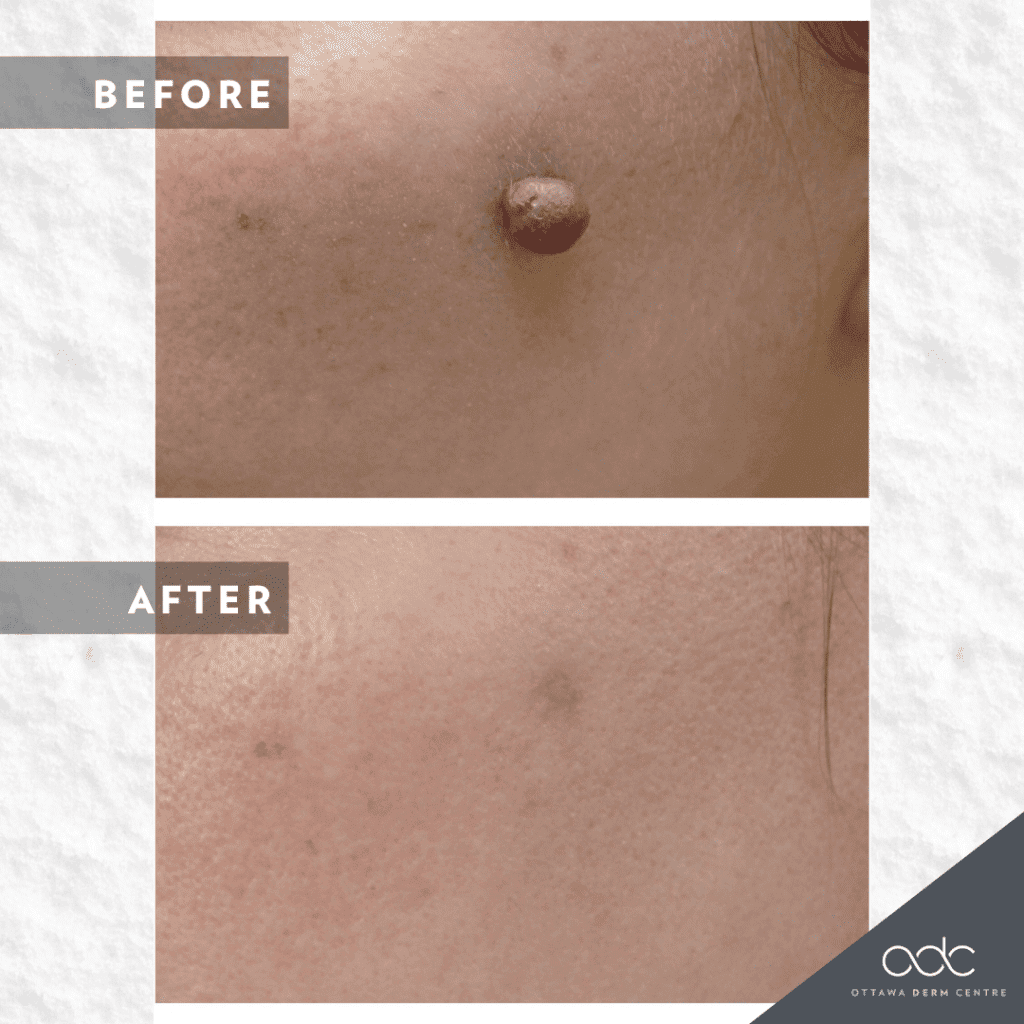It is common to notice dark pigmentated spots or raised moles on your skin. Many people experience pigmented spots often referred to as moles, including raised moles throughout their lifetime. While some of them may be caused by sun exposure, others may be caused by other factors. If you are interested in learning more about pigmented lesions and what to look out for to ensure healthy skin, read on.
What are Moles?
Moles are usually harmless, and nearly all adults have at least a couple of them on their skin. These skin spots are caused by melanocyte cells in the skin. While some are born with pigmented lesions, others develop them over time due to changing hormones, aging, or exposure to the sun.
Common types of pigmented spots and moles include:
“Age” Spots: Small, flat, dark areas of the skin that show up on areas that are commonly exposed to the sun.
Nevi/Moles: Common pigmented skin lesions that develop throughout adulthood. Although rare, some moles may develop into different forms of skin cancer. Therefore, it is very important to monitor them closely, as well as to visit your dermatologist for annual skin checks. If either you or your dermatologist notice a change in the colour, diameter, size, or growth of mole, a biopsy may be needed to determine if skin cancer is present.
How Can I Tell if My Mole is Cancerous?
There are a few signs that you should look for when assessing a suspicious-looking mole. These include the ABCDE warning signs of cancer:
Asymmetry: Look for moles that are asymmetrical, meaning that one side is different than the other.
Border: Irregular, jagged, or rough borders of a mole is a warning sign.
Colour: Moles that have unusual colours or multiple colours should be checked by a professional.
Diameter: Moles that are larger than a pencil eraser should be assessed.
Evolution: If you have a mole that has evolved in any way over time be sure to have it checked out.
Treatments for Mole Removal?
If you have a noncancerous mole or skin tag that is bothersome, there are multiple removal techniques that can be employed. These include surgical excision, in which the area will be numbed, and a scalpel will be used to cut the mole or skin tag; or a surgical shave, in which a small blade will be used to shave off the mole or skin tag and some tissue beneath it.
Who is an Ideal Candidate for Mole Removal?
A patient who has had their moles assessed by a physician and they have been diagnosed as benign.
How Do I Prepare for the Treatment?
Follow our clinic numbing instructions.
Is There Any Downtime with the Treatments?
Very little downtime for mole removal. Our medical professionals will discuss what to expect at your initial consultation.
How Long Does a Treatment Take?
20-40 mins.
What is the Treatment Cost?
Starting at $350
How Do I Book a Treatment?
All our patients start with a thorough consultation. During your visit we will discuss your objectives and concerns. Our team of professionals will complete an assessment and make recommendations based on your needs. If you are deemed a good candidate, we can book your treatment then.





